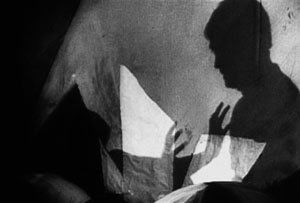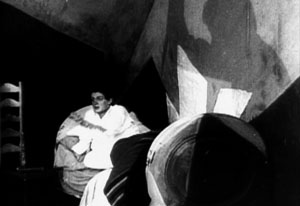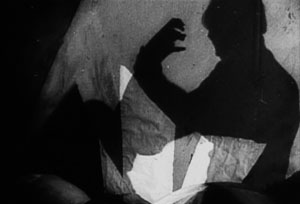



Shadows are used to evoke both fear and chaos of the characters’ psychological state. In ‘Caligari’, Cesare’s act of murder is shown only as distorted shadows, where the forms of the murderer and victim are skewed and exaggerated. This lack of realistic graphic information triggers the audience’s imagination. As Kurt Tucholsky states, “A murder becomes visible – as a play of shadows on a gray wall. And shows once again how something imagined is more horrible than anything shown. No cinema can compete with our imagination.” This shadow technique is adapted in Metropolis on another level. When Maria is chased by Rotwang at the top of the Cathedral, their actions are doubly shown as both physical and as shadows. In both films, the showing of the stark shadows suggests the duality in the characters. They represent a doppelganger, a dark ghost, alter ego or distorted side of man’s personality that emerges in the darkness of night to haunt him. Low-key lighting is an essential element in dystopic films, especially in the noir genre. The varied ratio of light to dark yields an infinite range of atmospheric tones and emotions. The thrill of the grotesque, the fear of the unknown, and the dynamic of the imagination are all heightened by the use of light, darkness and shadows.
